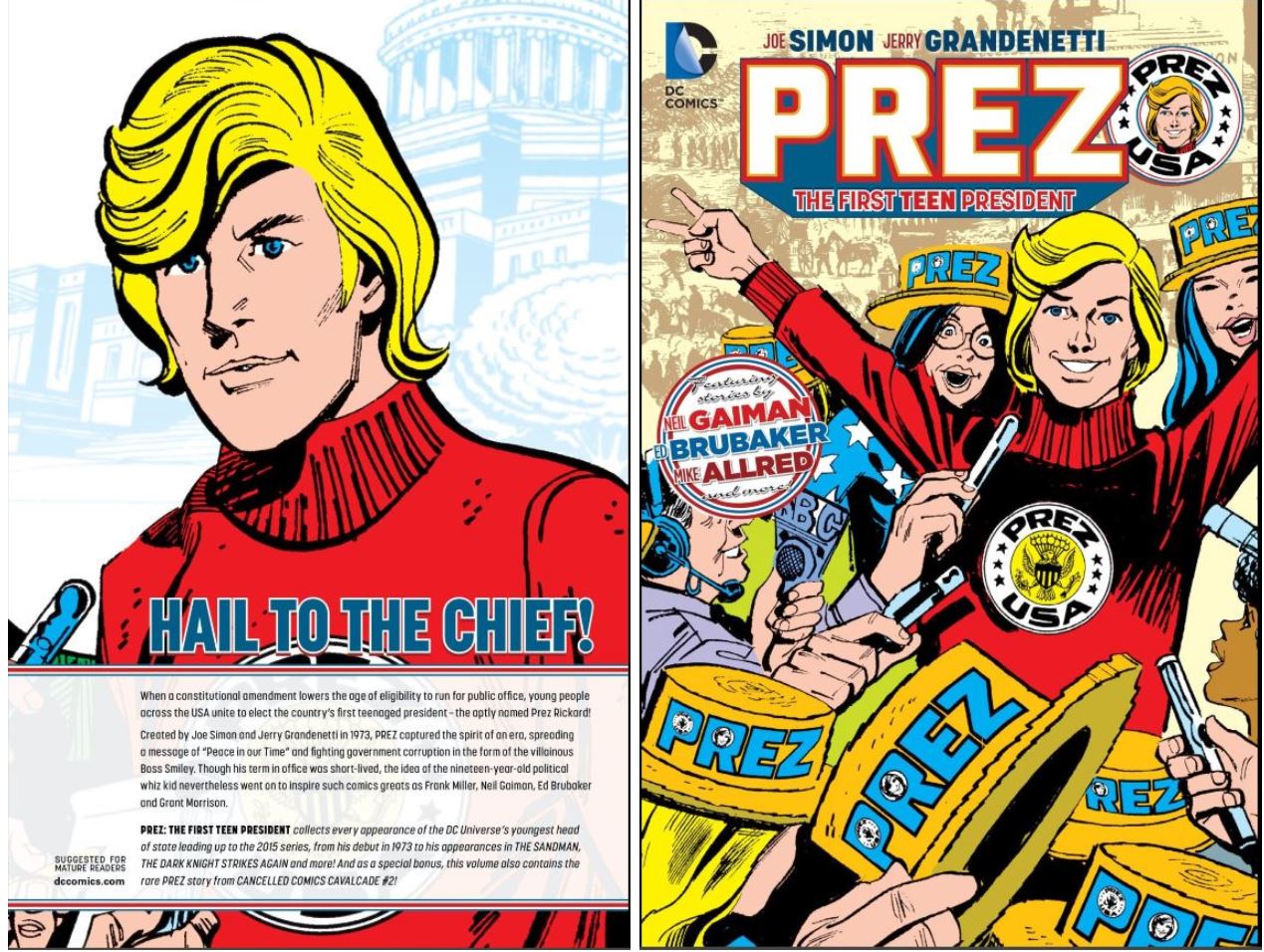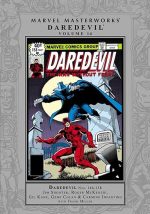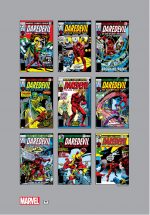

By Jim Shooter, David Michelinie, Roger Stern, Marv Wolfman, George Pérez, Bill Mantlo, Roger Slifer, Steve Gerber, Tom DeFalco, Mark Gruenwald, Steven Grant, Scott Edelman, Dave Wenzel, John Byrne, Sal Buscema, Carmine Infantino, Jim Mooney, Don Newton, Michael Netzer & various (Marvel)
ISBN: 978-0-7851-8790-5 (TPB/Digital edition)
The Avengers have always proved that putting all one’s star eggs in a single basket pays off big-time: even when all Marvel’s classic all-stars such as Thor, Captain America and Iron Man are absent, it merely allows the team’s lesser lights to shine more brightly.
Of course, all the founding stars were regularly featured due to the rotating, open door policy, which means that every issue includes somebody’s fave-rave – and the boldly grand-scale impressive stories and artwork are no hindrance either. With the team now global icons, let’s look again at the stories which form the foundation of that pre-eminence.
Re-presenting Avengers #167, Avengers Annual #8 & 9 and material from Marvel Tales #100 (cumulatively spanning January 1978 to October 1979), these stories still see the team in turbulent transition. That was as much a result of creative upheaval at the House of Ideas as narrative exigency. Times were changing for the company which would soon become a plaything of relentless corporate forces.
The storytelling begins in #167 as an epic opens. Jim Shooter’s connection to the series, although episodic, was long-lived and produced some of that period’s greatest tales, none more so than the stellar – if deadline-doomed – saga that unfolded over succeeding months: a sprawling tale of time-travel and cosmic conquest which began in Avengers #167-168 before an enforced brief pause saw a diversion before resuming for #170 through #177.
In previous issues Captain America and Iron Man’s difference of opinion over leadership styles had begun to polarise the team. Cracks appeared and tensions showed in #167’s ‘Tomorrow Dies Today!’ (by Shooter, George Pérez & Pablos Marcos).
In the Gods-&-Monsters filled Marvel Universe there are entrenched and jealous Hierarchies of Power, so when a new player mysteriously materialises in the 20th century the very Fabric of Reality is threatened. It all kicks off when star-spanning 31st century freedom Fighters Guardians of the Galaxy blip into Earth orbit, in hot pursuit of cyborg despot Korvac. Their arrival inadvertently sets off planetary incursion alarms, so their moon-sized ship is swiftly boarded by an Avengers squad, where – after the obligatory introductory squabble – the future men (Charlie-27, Yondu, Martinex, Nikki, Vance Astro and enigmatic Space God Starhawk) explain the purpose of their mission…
Captain America had once fought beside them to liberate their home era from Badoon rule and Thor recently battled the fugitive Korvac, so peace soon breaks out, but even with the resources of Earth’s Mightiest Heroes, the time travellers are unable to find their quarry…
Meanwhile on Earth, a mysterious being named Michael lurks in the background. At a fashion show staged by The Wasp, he achieves a psychic communion with model Carina Walters before they both vanish…
‘First Blood’ (Avengers #168) stirs up more trouble as Federal liaison/doctrinaire martinet Henry Peter Gyrich makes life bureaucratically hot for the government-funded superhero team. Meanwhile in Colorado, Hawkeye gets a shock as his travelling partner Two-Gun Kid vanishes before his eyes.
In suburban Forest Hills, Starhawk – in his female iteration Aleta – approaches a quiet residence. Michael/Korvac’s scheme consists of subtly altering events as he gathers strength in secret preparation for a sneak attack on those aforementioned Cosmic Hierarchies. His entire plan revolves around not being noticed. Thus, when Starhawk confronts him, the villain kills the stellar intruder but instantly resurrects him – minus the ability to perceive Michael or any of his works…
The drama screeches to a halt in #169, which instead declares ‘If We Should Fail… The World Dies Tonight!’ The out of context potboiler – by Marv Wolfman, Sal Buscema & Dave Hunt – sees Cap, Iron Man and The Black Panther scouring Earth in search of doomsday bombs wired to the failing heart of a dying man, after which the major mayhem resumes in #170 with ‘…Though Hell Should Bar the Way!’ by Shooter, Pérez & Marcos. As Sentinel of Liberty and Golden Avenger finally settle their differences, in Inhuman city Attilan, ex-Avenger Quicksilver suddenly disappears, even as dormant mechanoid Jocasta (designed by maniac AI Ultron to be his bride) goes on a rampage before vanishing into the wilds of New York City.
In stealthy pursuit and hoping her trail will lead to Ultron himself, the team stride into a trap ‘…Where Angels Fear to Tread’, but nevertheless triumph thanks to the hex powers of The Scarlet Witch, the assistance of pushy, no-nonsense new hero Ms. Marvel and Jocasta’s own rebellion against the metal monster who made her. However, at their moment of triumph the Avengers are stunned to witness Cap and Jocasta winking out of existence…
Problems pile up in #172 (Shooter, Sal Buscema & Klaus Janson) as Watchdog-come-Gadfly Gyrich is roughly manhandled and captured by out-of-the-loop returnee Hawkeye. He responds by rescinding the team’s Federal clearances. Badly handicapped, the heroes are unable to warn other inactive members of the ongoing disappearances even as a squad of heavy hitters rush off to tackle marauding Atlantean maverick Tyrak the Treacherous who is bloodily enacting a ‘Holocaust in New York Harbor!’
Plotted by Shooter, with David Michelinie scripting for Sal Buscema & D(iverse) Hands to illustrate, answers to the growing mystery are finally forthcoming in ‘Threshold of Oblivion!’ As the vanishings escalate, the remaining Avengers (Thor, Wasp, Hawkeye and Iron Man – with the assistance of Vance Astro) track down their hidden foe and beam into a cloaked starship to liberate the ‘Captives of the Collector!’ (Shooter, Bill Mantlo, Dave Wenzel & Marcos)…
After a staggering struggle, the heroes triumph and their old foe reveals a shocking truth: he is an Elder of the Universe who foresaw cosmic doom millennia previously and sought to preserve special artefacts and creatures – such as The Avengers – from the approaching apocalypse. As he reveals that predicted end-time is here and that he has sent his own daughter Carina to infiltrate the Enemy’s stronghold, the cosmic curator is obliterated by a devastating blast of energy. The damage, however, is done and the entrenched hierarchies of creation may well be alerted…
Issue #175 started the final countdown as ‘The End… and Beginning!’ (Shooter, Michelinie, Wenzel & Marcos) sees the amassed and liberated ranks of Avengers and Guardians follow clues to Michael, just as the new god shares the incredible secret of his apotheosis with Carina, before ‘The Destiny Hunt!’ and ‘The Hope… and the Slaughter!’ (Shooter, Wenzel, Marcos & Ricardo Villamonte) depict the army of champions eradicated and resurrected when Michael easily overpowers all opposition but falters for lack of one fundamental failing…
Spread through a series of lesser adventures, the overarching epic ponderously and ominously unfolds before finally exploding into a devastating and tragic Battle Royale that is the epitome of superhero comics. This is pure escapist fantasy at its finest.
Despite being somewhat diminished by the artwork when the magnificent Pérez gave way to less enthused hands and afflicted by the inability to keep a regular inker (Pablo Marcos, Klaus Janson, Ricardo Villamonte and Tom Morgan all pitched in), sheer epic scope nevertheless carries this story through to its cataclysmic and fulfilling conclusion. Even Shooter’s reluctant replacement by scripters Dave Michelinie and Bill Mantlo (as his editorial career advanced) couldn’t derail this juggernaut of adventure. If you want to see what makes Superhero fiction work, and can keep track of nearly two dozen flamboyant characters, this is a fine example of how to make such an unwieldy proposition easily accessible to the new and returning reader…
Jim Shooter, having galvanised and steadied the company’s notional flagship, moved on, leaving David Michelinie to impress his own ideas and personality upon the team, but such transitions are always tricky and some water-treading fill-ins were necessary before progress resumed.
After the death and resurrection of the heroes, focus slipped seamlessly into Avengers Annual #8, getting back to business with monolithic Fights ‘n’ Tights melee ‘Spectrums of Deceit!’, courtesy of Roger Slifer, Pérez, Marcos & Villamonte as the sentient power-prism of archvillain Doctor Spectrum systematically possesses Earth’s Mightiest Heroes. The upshot is another blockbusting battle against The Squadron Sinister and ethically ambivalent extra-dimensional “Femizon” Thundra and offers another guest shot for mighty Ms. Marvel…
A subtle change of pace and tone came in Avengers #178. ‘The Martyr Perplex!’ – by Steve Gerber, Carmine Infantino & Rudy Nebres – sees mutant Hank McCoy/The Beast targeted by master brainwasher The Manipulator in a tense psycho-thriller teeming with shady crooks and government spooks. Then Tom DeFalco, Jim Mooney, Al Gordon & Mike Esposito deliver a 2-part yarn introducing tragic mutant Bloodhawk and an ambitious human hitman in ‘Slowly Slays the Stinger!’
Whilst Stinger cautiously executes his commission, another cohort of champions accompany Bloodhawk to his desolate island home of Maura for a ‘Berserkers’ Holiday’, just in time to battle an animated and agitated stone idol. When they return victorious, Stinger is waiting and the assemblage loses its newest ally forever…
Finally back on track, Avengers #181 introduces new regular creative team Michelinie & John Byrne (augmented by inker Gene Day) as ‘On the Matter of Heroes!’ sees intrusive, obsessive Gyrich lay down the law and winnow the legion of heroes down to a federally acceptable seven. As the Guardians of the Galaxy head back to their future, Iron Man, The Vision, Captain America, Scarlet Witch, Beast and Wasp must placate Hawkeye after he is rejected in favour of new recruit The Falcon – reluctantly parachuted in to conform to government affirmative action quotas…
Almost immediately, Gyrich’s methodically calculated plans are in tatters as an elderly Romani sorcerer attacks. Claiming mutants Wanda and Pietro Frank as his long-lost children, the mage traps their souls inside little wooden dolls, with the resultant clash in #182’s ‘Honor Thy Father’ (inked by Janson) creating even more questions as overwhelming evidence seems to confirm Django Maximoff’s story. The upshot sees Scarlet Witch and Quicksilver leave with him on a quest for answers…
Michelinie, Byrne, Janson & D Hands provide a breathtaking all-action extravaganza in #183-184 as ‘The Redoubtable Return of Crusher Creel!’ finds Carol Danvers/Ms. Marvel cleared by Gyrich to replace Wanda. Elsewhere in the Big Apple, the formidable Absorbing Man has opted to leave the country and quit being thrashed by heroes. Unfortunately, his departure plans include kidnapping a young woman “for company”, leading to a cataclysmic showdown with the heroes and Hawkeye (still determined to win back his place on the team) and resulting in carnage, chaos and ‘Death on the Hudson!’…
Historical continuity addicts Mark Gruenwald & Steven Grant plotted #185’s ‘The Yesterday Quest!’ for Michelinie, Byrne & Dan Green to execute as, in America, robotic ally Jocasta strives to entice The Vision even as his wife and brother-in-law arrive in Balkan state Transia. In the shadow of mystic Mount Wundagore, Wanda is beguiled by Modred the Mystic, leaving Quicksilver to perish if not for the ministrations of talking humanoid cow Bova. The wetnurse once employed by the High Evolutionary doesn’t mind. After all she was midwife to Pietro’s mother years ago…
‘Nights of Wundagore!’ unpicks years of mystery with secrets of the mutants’ origins: how Bova passed them off as the stillborn children of American WWII superhero Bob Frank and offers big hints as to their true father’s identity. Wanda, meanwhile, has lost a magic duel with Modred and is now possessed by ancient demon Chthon. Pietro barely survives his clash with her/it, and calls for help, but thanks to more pointless bureaucracy from Gyrich, it is hours before the Avengers – missing Iron Man but including Wonder Man – arrive to face the world rending ‘Call of the Mountain Thing!’
Although they ultimately triumph, not every participant makes it out alive…
The way home is just as momentous, as #188’s ‘Elementary, Dear Avengers’ (Bill Mantlo, Byrne, Green & Frank Springer) begins with a side trip to Attilan and news that Quicksilver is about to become a dad, and ends with the team causing an international incident by diverting over Russian airspace. Thankfully, the incident overlaps with a secret Soviet science experiment going badly wrong, compelling the heroes to tackle sentient elements with a taste for death and destruction…
Avengers Annual #9 then introduces a lethal secret from the past as Mantlo, Don Newton, Jack Abel & Joe Rubinstein introduce a deadly robotic sleeper locked for decades beneath Avengers Mansion. ‘…Today the Avengers Die!’ reprises Iron Man’s recent battle against deadly vintage mechanoid Arsenal and reveals how the Howard Stark-built weapon was cached in his old townhouse. Now ‘Something Deadly Lurks Below!’ proves that they should have let sleeping bots lie…
Rounding out the chronologically completist action is a snippet from Marvel Tales #100 (February 1979) as time-displaced Two-Gun Kid and Hawkeye battle Killgrave the Controller in ‘Killers of a Purple Rage!’ by Scott Edelman, Michael Netzer & Terry Austin.
Supplemented by previous compilation covers courtesy of Pérez & Joe Rosas and Steve Epting & Tom Palmer, contemporary House Ads, editorial material debating the new origins for Pietro and Wanda, an epilogue strip by Mark Gruenwald & Tom Morgan from Avengers: The Korvac Saga, and a wealth of original covers/page art by Pérez, Byrne, Dave Cockrum and more, this archival tome and type of heroic adventure might not be to every reader’s taste but these – and the truly epic yarns that followed – set the tone for fantastic Fights ‘n’ Tights dramas for decades to come and informed all those movies everybody loves. This science fiction double feature can still boggle the mind and take the breath away, even here in the quietly isolated and no less dangerous 21st century…
© 2023 MARVEL.




















